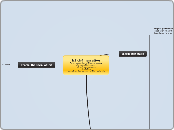b1 ch4 narrative
An investigation of Piagets theory
into how children dev:- object permanence,
- imitation- use of models as repr. of the real worldundefined
sensimotor stage
Object permanence: objects continue to exist even when they are not seen - foundation for memory and cogntive. dev. undefined
Discussion
Methods
any methods that do not require much coordination are good
gaze is good because no coordination required + viewing shows cogntive processes like attention or expectation
violation of expectation
habituation
egocentrism / empiricsm vs. nativist / core knowlege
Def. the konwledge that objects continue to exist even when they are not seen
foundation for memory and cognitive developement
Piaget : children develop this through touching and handling. Thus for him understanding dependends on motor development.
Childern in sensimotor lack object perm:
9m: when an object (which they showed interest in before) is hidden under cloth the do not make any attempt to retrieve it
Piaget:
The children are egocentric:
for them object exist cease to exist when when they do not see them. As if they would bring the object into existance.
Bower: viol.expect
2m train moving toward screen in was expected to reappear behind a block. But fail to inhibit stop of gaze
stopping train before
child gaze continues
Baillargon: imp:event
5m Block and Bridge
a) habituated to 180 rotation
b) Look longer at the impossible "going 180" through event vs. rotaion stopped at 120
sugg that they expact the objec to be permanent
Good: controlled for rotation time
6-8m Car and blocked road
If the road is blocked and the car still appears (surprising event) chidren spend more time looking
when they controlled for the differnt rotation times there was no difference
3, 5 same reaction
suggestive of children having
a core knowledgeundefined
(a) the block continued to exist,
(b) the car continued to exist
(c) the car could not roll through the block
P. task demanded a level of coordination they were not capable of
dev sequence 2,5 / 3,5
Object hidden behind occluder
2,5 any object hidden
3,5 integrate the hight and shape
Hood and Villats
5m object and Lights out
chilren make more movements in the direction of where the object was suggestive that they do not suppose that the object ceases to exist
Good: Controlled for baseline reaching behav
A - not B- error
(robust finding)
Piaget
9m-12m looked under location A even though they saw object position was changed to B
sugg: egocentrism
Harrris
Memory trace fades when obect is hidden
Diamond
older children are better in longer delays
habituation takes over when trace is faded
Buttworth
fail even with see though cloth
egocentric and allocentric
if both codes are used both must be updated
Dicussion: Issue if memory or inhibition not completely resolved
egocentrism
Piaget: 2-7 3 mountains task:
inablity to show what another percptective woul look like
taken to suggest inablity to decenter
Counterevidence
Huges et al: 90% of 3-5 could hide the doll from the police
Suggesting that the P method placed to many cognitive demands on the children.
People, the social object
Imitation: foundation for social developement
Piaget
Imitation not possible before 12 m:
imitation:
- needs memory, so only imitation for what is alredy known
- only imitation of body parts that can be seen
- true imitaion has a time lag (cogntion)
obsevation of own kids:
<1 from no imitation to
>12 deffered and new imitation
Supported by Uzgiris and Huntundefined
<6m no imitation of new behavior
>9m: imitation with body parts they can see
> 12 m: imitation of new actions
Methods
but: small sample, no generalization
good: longitudinal observation in econatural circumstances. study / within participant study w. fewer variation
Counterevidence
Meltzof + Moore: early Imitation of
a) new behaviour in b) blind body parts undefined
6 infants aged 12- 21 days: were shown one of 4 gestures
judges: likelyhood of imitaion
but some error because "not applicable" was not possible
but: small sample
Meltzoff+Moore: 6w imitation and adaptation/learning even after delayundefined
6 w: after delay of 24h were still abel to imitate tongue protrusion to the side.
- Also adaptation shown to make it more similar – even though not see body part
Meltzofff + Moore: developmental progression undefined
- 2-3 m vs. 6 weeks old.
- > 18m they understood unsuccessful inteded beh
Methods
good larger, and many differnt samples
good: experimental allows to manipulate conditions
but: low response rates (large variation) making it difficult to see age related changes
Suggestive
Likely an inborn abilty to imitat which facilites social interaction
